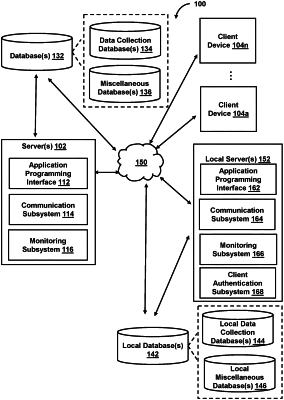| CPC H04L 63/1466 (2013.01) [H04L 63/083 (2013.01); H04L 63/101 (2013.01); H04L 63/1425 (2013.01); H04L 63/1433 (2013.01)] | 18 Claims |

|
1. A tangible, non-transitory, machine-readable medium storing instructions that when executed by one or more processors effectuate operations comprising:
obtaining, with one or more processors, with a domain controller of a private computer network, a set of user-authentication credentials comprising a first username and a first password;
querying, with one or more processors, a credential-monitoring application with a query requesting compromised credentials corresponding to the first username, wherein the credential-monitoring application is external to the private computer network;
receiving, with one or more processors, query results of the querying including one or more passwords associated with the first username;
determining, with one or more processors, with a credential guardian module, that at least some of the one or more passwords in the query results match the obtained first password, wherein the credential guardian module is within the private computer network;
instructing, with the one or more processors, with the credential guardian module, the domain controller to block access to a first user account on the private computer network that is associated with the set of user-authentication credentials;
blocking, with one or more processors, with the domain controller, access to the first user account on the private computer network; and
in response to the determination, causing, with one or more processors, a first user associated with the first user account to be notified to reset the obtained first password.
|